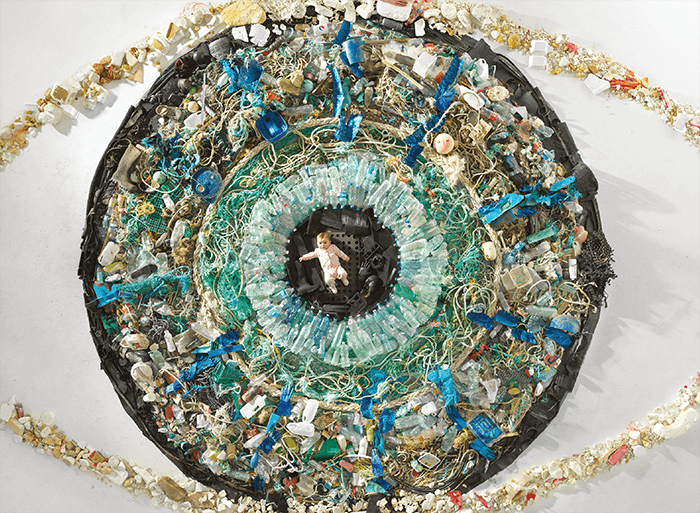 Image by Karl Taylor, “The Valley of Litter”
Image by Karl Taylor, “The Valley of Litter”
All Eyes on Sustainability
Image by Karl Taylor, “The Valley of Litter,” links two of our August 2022 main features: The Art of Eyes and All Eyes on Sustainability.
Read more on sustainability in ophthalmology in these articles:
Waste Not, Want Not by John Hovanesian
Cleaning Up Congress by Oliver Findl
Look Up by Dan Morris
Mandala Eyes
The artist, Katherine McVeigh who is an ophthalmologist practicing in Berlin, Germany, comments: “The eyes are unique. Not only are they a window to the mind and the soul, but also they allow us to look inside: revealing signs of disease within the eye, as well as further away in the body. As an ophthalmologist with a long-standing fascination for the eyes and vision, as well as a passion for crafting and design, I recently found myself wondering how art has been used in the past to document and present the structure of the eye. How would those representations fit in the modern world, with our OCT scans and high-definition cameras?
The images in my Mandala series have been collaged to create mandala-style compositions that mirror the technical structure of the eye in an abstract technique, bringing new life and fresh perspective to old artworks.”
Mandala #1 Mind
Inspired by the individuality and remarkability of the iris, images portraying the iris, ciliary body and choroid were sampled and rearranged in concentrically aligned rings to create a novel interpretation of the uveal tract.
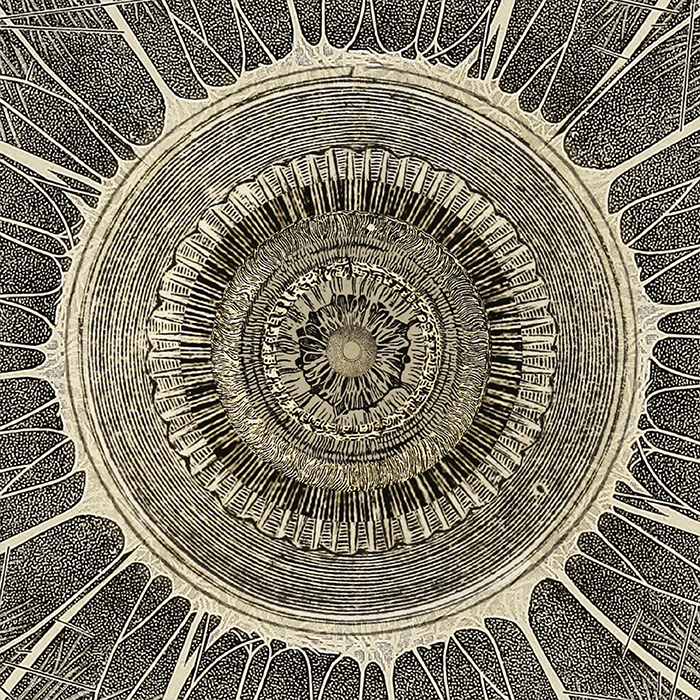
Mandala #2 Body
Bringing together ocular images presented in mixed anatomical planes, concentrically aligned rings are combined with radial slices, to create an abstract reconstruction of the eye.
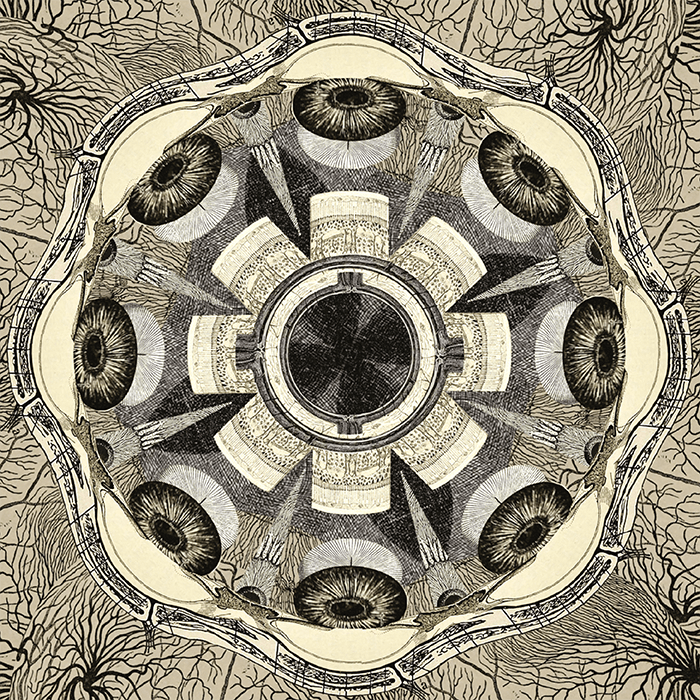
Mandala #3 Soul
This collage mixes coronal plane anatomical and histological images of the eye. The anterior structures are shown peripherally and the posterior structures centrally.
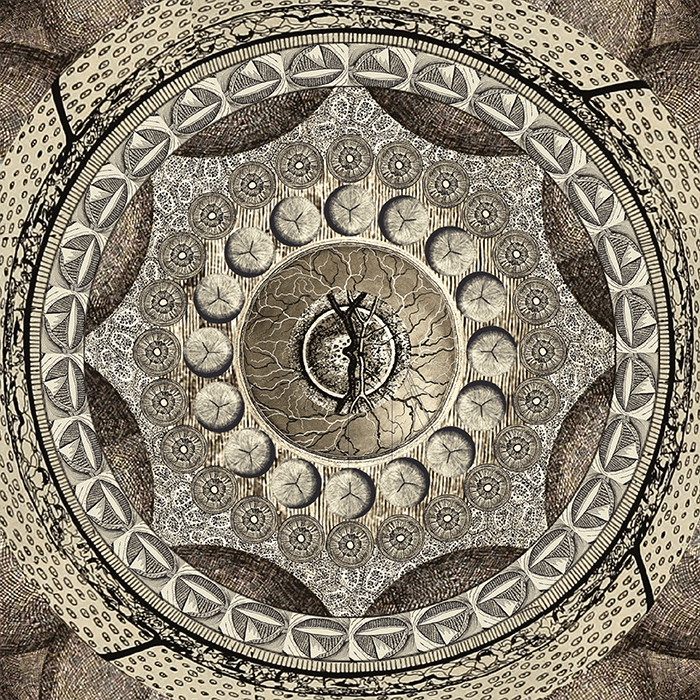
Ίρις
This is an abstract interpretation of how the iris can be compared to an ocular version of a fingerprint. A stamp effect montage was created using illustrations from archived ophthalmology books between 1850 and 1935. To convey 3D effect, the original images were used as a base layer and further inverted versions of each image were developed and overlaid with a slight offset. The word iris is derived from the Greek word for rainbow, inspiring the background coloration and reflecting the wide range of potential iris colors.
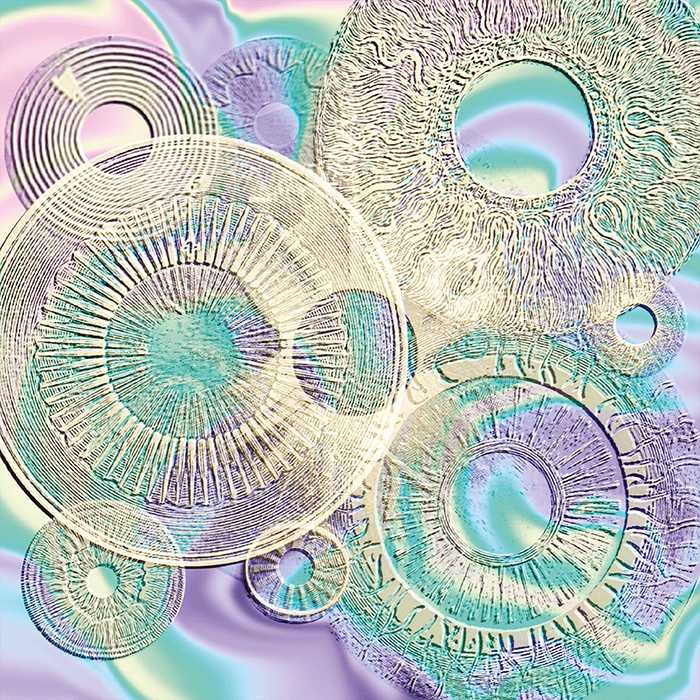
Looking Ahead
This conceptual montage amalgamates illustrations sampled from archived medical and ophthalmic books and combines them with a backdrop of the night sky. The result could symbolize the mortal nature of human existence, hence the importance of managing existential risks.
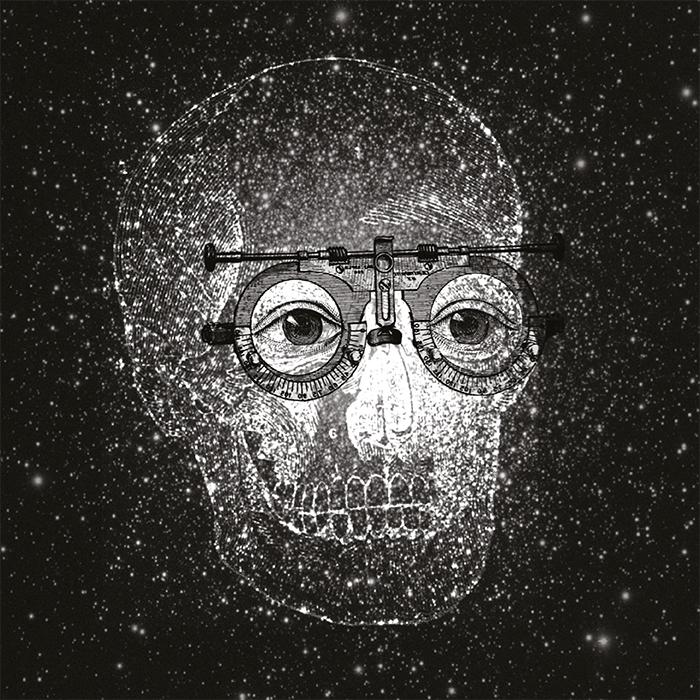
Dr Lizard and His Patients
Dorothea Laurence has just completed her first year of ophthalmology residency at Dr Hoffmann’s Eye Clinic in Braunschweig, Germany. She graduated from the University of Göttingen medical school, where she also completed her doctoral thesis and received the German title of “Dr. med.”
She comments: “In my spare time, I love to illustrate and do calligraphy; my favorite media are dip-pen, ink and watercolors. I have a special love for children’s book illustrations, inspired by my two young daughters, and animal characters. Dr Lizard is illustrated using pencil on paper. So much of the terminology in ophthalmology lends itself to puns, so Dr Lizard and his animal patients were a natural outgrowth of the many hours I spent in the eye clinic over the past year.”
www.dorothealaurence.com
Instagram: @dorotheaslaurence
Illustrations may not be reused without permission.
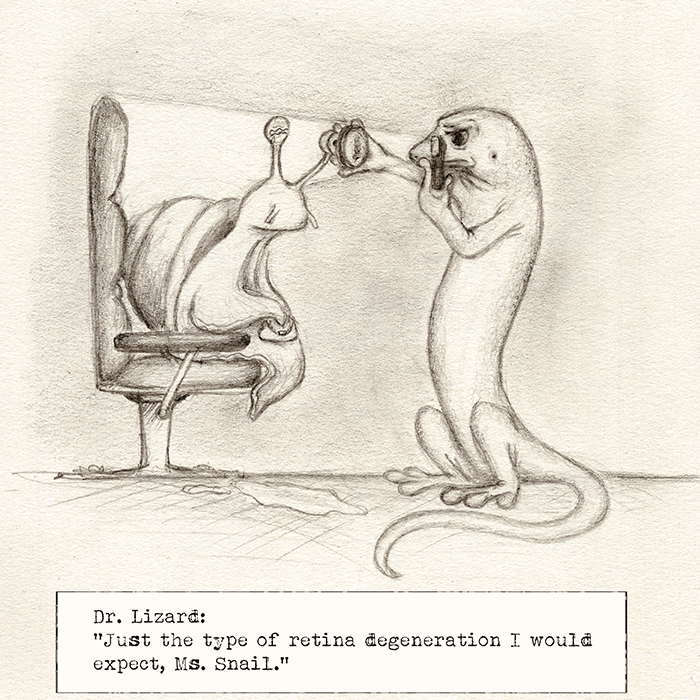
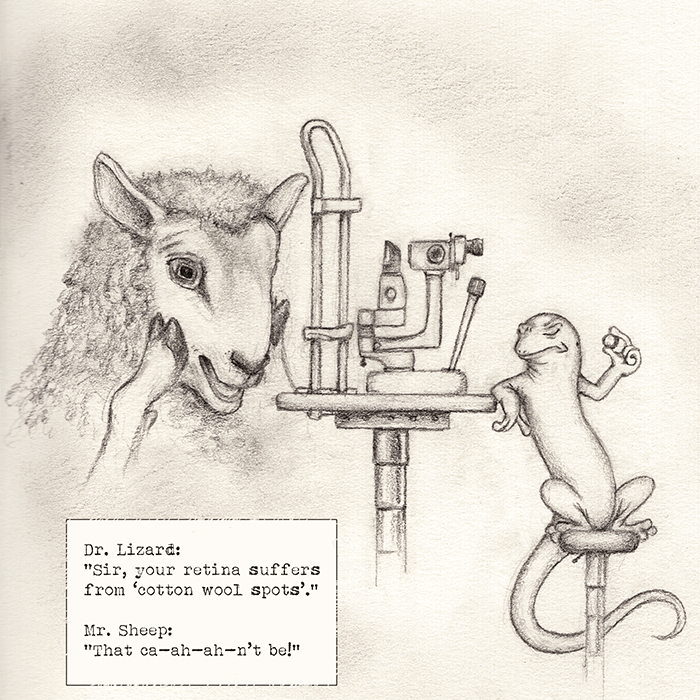
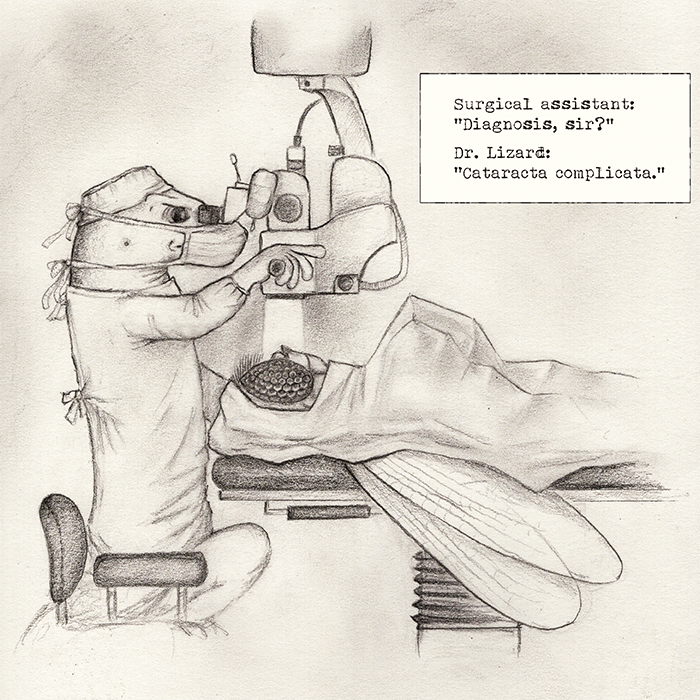
Intelligent Design
Nima Ghadiri is a Medical Ophthalmology Consultant and Honorary Senior Lecturer, Liverpool University Hospitals NHS Foundation Trust. “All of the images are created by the same process: I’ve used my own brush strokes, paintings, sketches, or drawings on either canvas or paper. These are then scanned and inserted within a deep learning algorithm that interprets the style (using a “tokenizing system”). Then I use an image of the eye, either one of my own or a stock, as the input image, and apply the algorithm to get these outputs.”
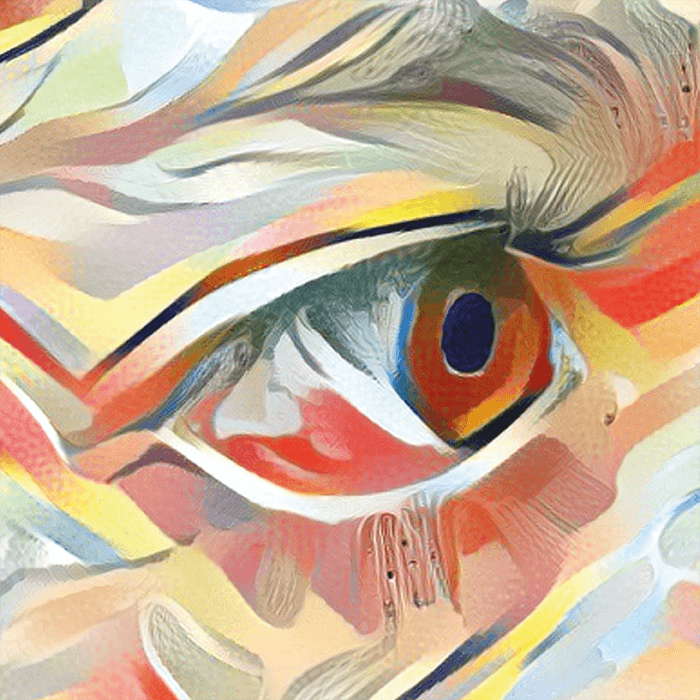
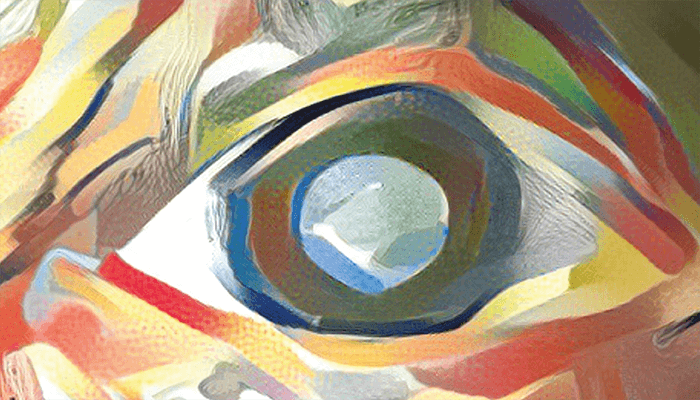
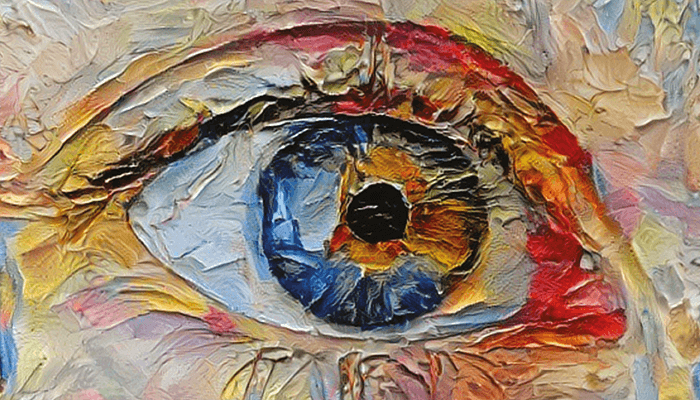
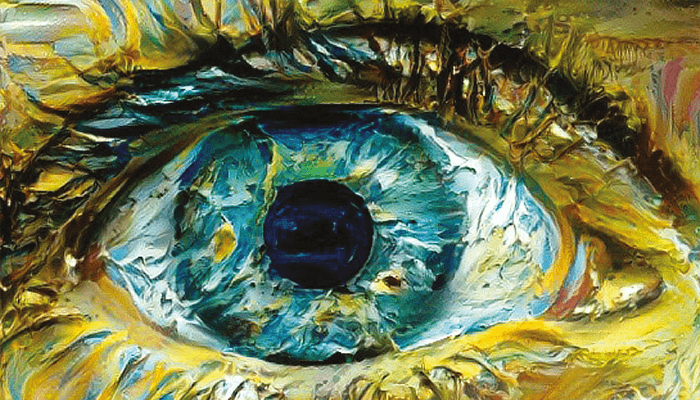
Through the Eye of AI
Fares Antaki is a senior resident in the Department of Ophthalmology at the University of Montreal, Canada, where he held the position of chief resident in 2022. He received his MD from McGill University in 2018. He is interested in digital innovations in medicine and, in particular, the applications of emerging technologies such as AI, VR, and telemedicine in ophthalmology. At the end of his residency in 2023, he will complete a fellowship in Artificial Medical Intelligence in the UK and then plans to pursue a clinical fellowship in retinal diseases and surgery.
Antaki says: “Growing up in Aleppo, Syria, my father – also an ophthalmologist – was extremely passionate about visual arts. His collection includes more than 300 paintings, mostly by Syrian, Lebanese, and Armenian artists, and ever since I was a child, I have always enjoyed exploring works of art, especially paintings, as my father regularly took me to art galleries. I found that over the years, my appreciation for art refined my observational and interpretive skills, allowing me to build visual literacy and appreciate minute details, which served me well in ophthalmology. Since starting ophthalmology residency, I have continuously found myself inspired by the forms I found on fundoscopy and even on OCT images.
I started doing research in AI in 2020, so I followed a few relevant Twitter accounts. I came across DALL-E on my feed a few months ago and was extremely impressed by what it was able to achieve. I quickly signed up and was granted access a few days ago. The first prompt I wanted to write naturally had to do with ophthalmology. I thought of cataract surgery and after many trials and errors I found the perfect prompt and applied the styles of different artists to it: Picasso, Klimt, Basquiat, and Munch. Is it creative? Possibly… but honestly to me it just felt like I was connecting things. I was able to connect my previous experiences – growing up loving art – and my new experiences – doing research in AI – to synthesize new things, creating my four paintings. I don’t consider myself an artist.
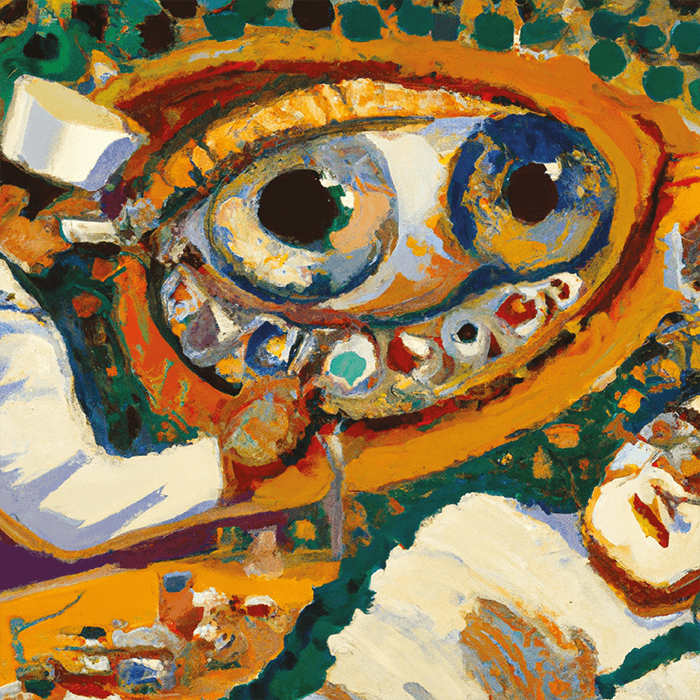 “A painting of an ophthalmologist performing cataract surgery, in the style of Klimt” – AI painting generated by Fares Antaki using DALL-E 2
“A painting of an ophthalmologist performing cataract surgery, in the style of Klimt” – AI painting generated by Fares Antaki using DALL-E 2
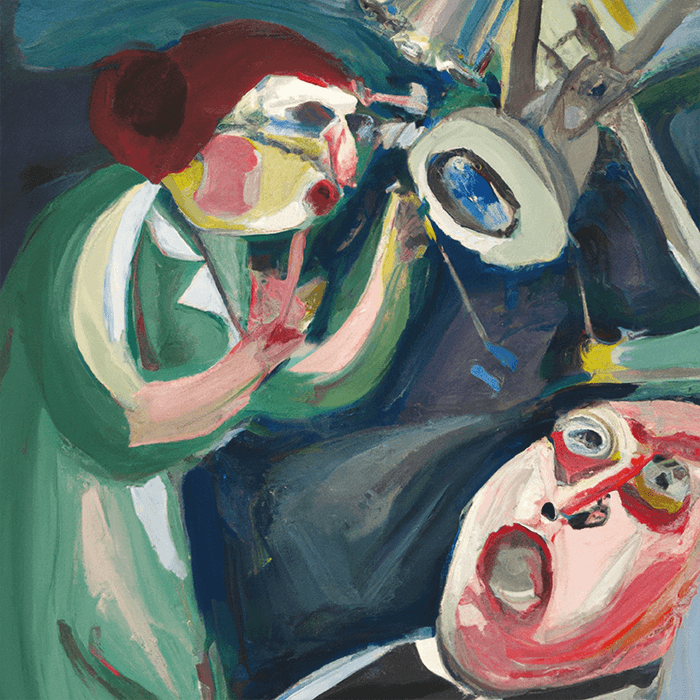 “An expressive oil painting depicting an ophthalmologist performing cataract surgery, in the style of Munch” – AI painting generated by Fares Antaki using DALL-E 2
“An expressive oil painting depicting an ophthalmologist performing cataract surgery, in the style of Munch” – AI painting generated by Fares Antaki using DALL-E 2
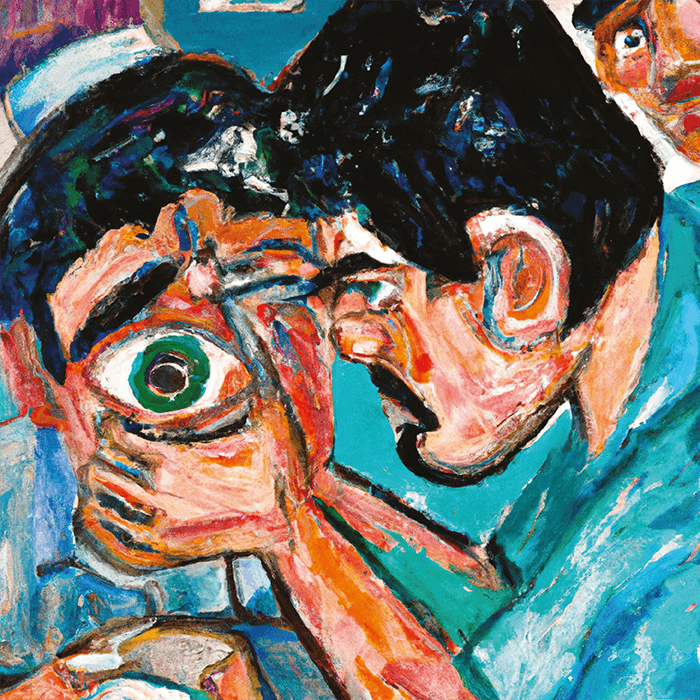 “An expressive oil painting depicting an ophthalmologist performing cataract surgery, in the style of Picasso” – AI painting generated by Fares Antaki using DALL-E 2
“An expressive oil painting depicting an ophthalmologist performing cataract surgery, in the style of Picasso” – AI painting generated by Fares Antaki using DALL-E 2
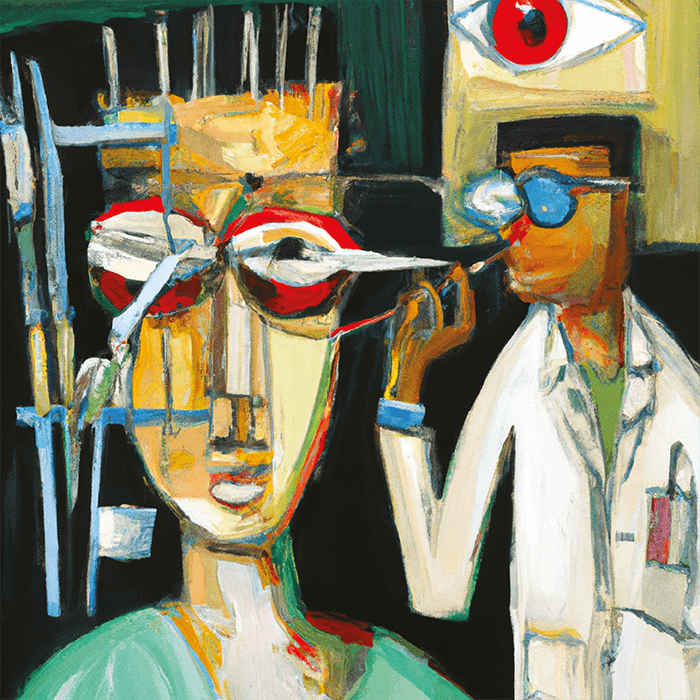 “An expressive oil painting depicting an ophthalmologist performing cataract surgery, in the style of Basquiat” – AI painting generated by Fares Antaki using DALL-E 2
“An expressive oil painting depicting an ophthalmologist performing cataract surgery, in the style of Basquiat” – AI painting generated by Fares Antaki using DALL-E 2
AI paintings generated by Fares Antaki using DALL-E 2 (OpenAI).
If you would like to send us your artwork for next year’s edition of this feature or for Image of the Issue, please email edit@theophthalmologist.com.
